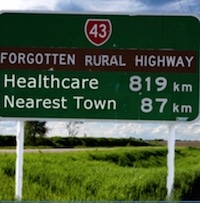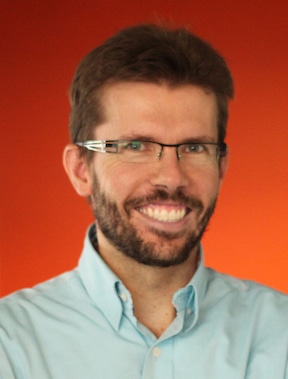by Matthew Bromwich, M.D.*
Outreach work comes with many challenges, not the least of which is transportation of medical equipment. As an ENT surgeon, I travel with a portable audiometer. Typically, this device is a donated, tabletop, wired suitcase device with a handle. We have traveled to remote communities up north and to our outreach work in east Africa using these types of devices. Tablet audiometry helps overcome some of these challenges.
Inconsistent Access to Care
Another challenge is that these remote areas also suffer from inconsistent access to care as specialists may only visit a few times a year. It is not unusual for patients to have been waiting for weeks, months, or even years to be seen by a specialist. Northern Canadians, for example, are also at risk of travel cancellations due to severe weather that may result in missed appointments and further significant delays. These periodic, punctuated outreach trips make it difficult for us to provide the best health care. Without specialist visits, patients may be required to travel great distances at great expense to receive care.
Leave Behind What You Take and Use
Over the years, we have found that leaving behind the equipment that we carry with us on these trips can be an effective approach. In addition, by training local health care providers, they may be able to continue the work after we leave. This is only practical if the system is inexpensive – meaning that it can easily be replaced if it gets damaged or stolen – is easily portable (so that it can be moved around to different remote communities), and is simple enough to use that while we are visiting we can train local staff on how to use the medical technology. These local technologists take the form of outreach workers, teachers, nurses, or community family doctors1. Having local technicians carry on the work we started can help to ensure continuity of care, build sustainable healthcare capacity, and provide an opportunity for those who missed us to be evaluated. We have found that tablet audiometers perform well in these situations where remote hearing healthcare is required.
This process is currently in place in several remote communities to provide support to existing audiological services. Currently, we travel only four times a year to Iqaluit to provide access to ENT surgical services. Beginning in January of this year, a pediatrician there started to provide some ancillary hearing testing services to help the only audiologist in the region. He also travels to more remote communities and sees people where they reside thus providing better access.
We have secure online access to all the information that we need to ‘intelligently triage’ these remotely-assessed patients. We can then analyze the test results and use this information to determine who should visit us at the tertiary care hospital for follow-up treatment. Given the very high cost of travel from Iqaluit, this process ensures that we only transport those patients in need, thus saving cost to the entire system, which can then be applied to care for other patients.
We have been expanding this type of remote audiometry program to other outreach clinics, including tuberculosis treatment programs, in more than 12 countries. In these situations, we can monitor patients’ hearing for ototoxic side effects in-situ rather than making them travel to audiology clinics for testing. Notably, a good number of the countries where tuberculosis monitoring is occurring did not have access to audiological services within their borders prior to mobile audiometry.
To support further expansion, we developed on-line training modules to help technicians better understand both the physiology of hearing and the technical aspects of the equipment2.
Audiology Services Shortages
At the end of the day, we still have an 80% shortage in audiological services, even in North America3,4. In May 2017, Johns Hopkins published a paper stating that by 2060, the number of adults with hearing loss is expected to double5. We simply don’t have the capacity to deal with the high incidence of hearing-related problems in urban or rural areas. One solution is to enable primary care, nurses, and outreach workers to provide more advanced testing by delivering technology that is simple, and accessible so that they can see the patients where they live. Treating disease early and in the community will help to effectively use our health care dollars and better serve patients’ needs.
*Dr. Matthew Bromwich is an Associate Professor at the University of Ottawa in the Department of Otolaryngology and has been a pediatric surgeon at the Children’s Hospital of Eastern Ontario since July 2009. He completed his medical training at Queen’s University, followed by a surgical residency at the London Health Sciences Centre and a Fellowship at the Cincinnati Children’s Hospital Medical Centre in pediatric airway reconstruction. He has published 25 papers and four book chapters on Otolaryngology. Dr. Bromwich is the inventor of several medical devices and holds 4 patents on various products in Canada and the U.S. Other research endeavors include treatments for dizziness, mobile hearing testing, video endoscopy and surgical airway reconstruction. His research aims to democratize access to medical care by delivering innovative and inexpensive solutions.
Disclosure: Dr. Bromwich is the Founder and Chief Medical Officer of Clearwater Clinical. Clearwater Clinical is a company which designs and develops novel medical devices to better serve and treat patients, including a tablet based audiometer called “Shoebox.”
Literature Cited
- Rourke R, Kong D, Bromwich M. Tablet Audiometry in Canadas North: A Portable and Efficient Method for Hearing Screening. Otolaryngol — Head Neck Surg. 2016. doi:10.1177/0194599816644407.
- Bromwich M, Rocker A, Lefrancois R. Audiometry Essentials – Audiometry Essentials. 2017. https://www.audiometryessentials.com/. Accessed May 27, 2017.
- Windmill IM, Freeman BA. Demand for audiology services: 30-yr projections and impact on academic programs. J Am Acad Audiol. 2013;24(5):407-416. doi:10.3766/jaaa.24.5.7.
- Freeman B. The Coming Crisis in Audiology. Audiol Today. 2009;21(6):46-53. https://acaeaccred.org/ComingCrisis21.6.pdf.
- Goman AM, Reed NS, Lin FR, CL T, WJ M. Addressing Estimated Hearing Loss in Adults in 2060. JAMA Otolaryngol Neck Surg. 2017;31(6):725-734. doi:10.1001/jamaoto.2016.4642.







